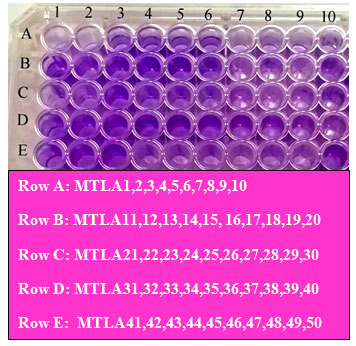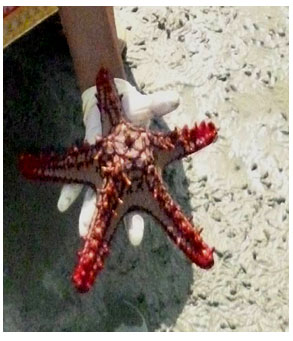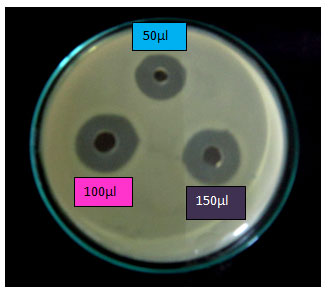PG and Research Department of Zoology,Vivekanandha College of Arts and Sciences
for Women,Tiruchengode – 637 205, Tamilnadu, India.
Corresponding author email: drvijayalakshmi@vicas.org
Article Publishing History
Received: 15/10/2022
Accepted After Revision: 17/11/2022
Recently, childhood caries have become one of the main health related diseases , especially developed by lactic acid bacteria, affecting millions of school going children worldwide. In the present work, we have isolated about 50 lactic acid bacteria samples from different tooth decay affected children from Fen Dental Clinic, Tirupur India. The emerging bacteria were confirmed by phenotype and genotype characterization. After, the pathogens were screened for the production of biofilm it was checked for the resistant mechanism of the Lactobacillus acidophilus. In this study the MTLA1-50 isolates produced strong biofilms which were confirmed for the Lactobacillus acidophilus carrying resistant capability. In particularly, the maximum strong biofilm producing strains were MTLA 32 and MTLA 50, followed by other isolates.
As star fish extract has been reported to play a vital role in eliminating the bacterial biofilm for this motive in this study we have chosen the star fish, Asterias rubens extract in the concentration of 50, 100, 150 µl. The analysis was performed and executed using well diffusion standard techniques. The results showed that the strain No. MTLA 32 and MTLA 50 got the maximum zone of inhibition at 150 µl (52mm and 38 mm) of the star fish extract. The findings demonstrate that the star fish extract has a powerful anti-biotic ability to treat the dental pathogens particularly, caused by Lactobacillus acidophilus.
Star Fish Extract, Dental Caries, Biofilm Production.
S. V lakshmi, Kumar A. M. EEffect of Multi-Functional Therapeutic Active Extract of Marine Asterias rubens against Tooth Decaying Pathogens. Biosc.Biotech.Res.Comm. 2022;15(4).
S. V lakshmi, Kumar A.M. EEffect of Multi-Functional Therapeutic Active Extract of Marine
Asterias rubens against Tooth Decaying Pathogen. Biosc.Biotech.Res.Comm. 2022;15(4). Available from: <a href=”https://bit.ly/3EmCWF3“>https://bit.ly/3EmCWF3</a>
Copyright © This is an Open Access Article distributed under the Terms of the Creative Commons Attribution License (CC-BY). https://creativecommons.org/licenses/by/4.0/, which permits unrestricted use distribution and reproduction in any medium, provided the original author and sources are credited.
INTRODUCTION
Human plaque is a prevalent disease in the world. A universal, 36% of the population affected approximately has decay in their permanent teeth. WHO estimates that virtually all human beings have tooth decay at some point in their lifetimes. Infant teeth distresses about 9% of the residents (Vos et al., 2012, Bagramian et al., 2009). The main reason is the formation of tooth decay causing destruction of oral tissues by lactic acid from bacterial fermentation of carbohydrates, resulting in the caries development. Streptococcus and Lactobacillus play major role in establishment of tooth decay (Chen and Wang, 2010, Al-Zahrani et al., 2022).
In ancient times, the development of tooth decay was mainly exhibited by primary microbes especially Lactobacillus spp. (Owen et al, 1949) and the pathogen appeared throughout the foremost years of infant’s life causing root caries and periodontal diseases (Badet and Thebaud, 2008, Austin et al., 1999). Currently, some anti-drugs prescribed for the treatment of plaque disease. But the distress pathogenic dental microbe fully oppose towards presently updated antibiotic medicine. One of the techniques to decrease the drug resistant is by using antibiotic resistant inhibitor from starfish Asterias rubens in the way of extract containing the therapeutic compound. Starfish extracts can eliminate the target sites of the emerging dental pathogens because of their antibacterial potential ability as earlier, Asterias rubens, from numerous tissues like coelomocyte and body wall have shown to inhibit the pathogens, (Haug et al., 2002, Zahrani et al., 2022).
Hence the present study has been attempted to highlight role of the extract of the marine echinoderm, Asterias rubens which can be use as a prospective source for derivation of extraction of therapeutic compound, which can have anti- caries activity, as it can breakdown the biofilm formation this can be a possible treatment for caries infection in future.
MATERIAL AND METHODS
Collection of Plaque Sample: In this study childhood decay samples were collected from 50 patients attending the outdoor patients in Fen Dental Clinic, Tirupur District using sterile forceps. In this research 10% concentration of NaCl saline is used as a transport medium for enumerating the lactic acid bacteria.
Isolation of bacteria : After collection of dental sample, the decay sample serially diluted with peptone broth for minimizing bacterial growth for extracting 0.1ml culture plated over the Man Rogosa Sharpe agar for isolating child major dental pathogen Lactobacillus acidophilus.
Identification of Bacterial Isolates :In this research, all plaque pathogenic isolates identified by various biochemical character and 16Sr-RNA gene sequencing method.
Biofilm Assay:The decay isolates were grown on nutrient broth with and without 5% glucose, incubated overnight in microtiter plates at 37°C. End of incubation, the micro titer plate finally treat with crystal violet solution for exactly verify the ring of dental biofilm as visible as purple ring over the microtiter plate. The clinical cariogenic isolate showing maximum biofilm formation was chosen for antibacterial activity.
Collection of Star Fish :Sea star – Asterias rubens specimen were collected from Mandapam Coast, Chinnapalam – Thoppukadu Theevu, Rameshwaram Dt. The specimen were cleaned with sea water at the sampling site of Thoppukadu to remove sediments and contamination, then it was put in sterile polythene bags and stored in ice box suddenly transported to the laboratory for isolation of bio-medically active extract for treatment of dental pathogen.
Preparation of the crude extracts:The samples of star fish Asterias rubens were grinded by mortar and pestle instrument. Then, the extracts were filtered using Whatman No. 1 filter paper and it was mixed with dimethyl sulphoxide solution (10ml). In this study the antagonistic activity of starfish with DMSO extract was screened against dental pathogen.
Antibacterial bioassay:Pharmaceutical activity of 50, 100 and 150µl concentration of starfish extract was performed by well assay against lactic acid bacteria and the results were detected by measuring the diameter of inhibition zone around the dental bacterial colony and the measurement expressed in mm in diameter.
RESULTS AND DISCUSSION
Totally, 50 L. acidophilus lactic acid acidic strains isolated from 50 dental samples were identified by biochemical, biofilm production and 16SrRNA Gene Sequencing. In this study screening of cariogenic dental biofilm was analyzed with 5% concentration of glucose in the nutrient medium at 37°C. The micro titer plates filed with 5% con. of glucose concentrated medium with cariogenic grown culture were inoculated in each well. After incubation the plates were analyzed for the production of biofilm around the well of micro titer plate. Among 50 isolates the utmost strong effect of biofilm was observed in the strain no. MTLA32, MTLA50 followed by the strain no. MTLA2, MTLA3, MTLA4, MTLA5, MTLA6, MTLA7, MTLA8, MTLA9, MTLA10, MTLA11, MTLA12, MTLA13, MTLA14, MTLA15, MTLA16, MTLA17, MTLA18, MTLA19, MTLA20, MTLA21, MTLA22, MTLA23, MTLA24, MTLA25, MTLA26, MTLA27, MTLA28, MTLA29, MTLA30, MTLA31, MTLA33, MTLA34, MTLA35, MTLA36, MTLA37, MTLA38, MTLA39, MTLA40, MTLA41, MTLA42, MTLA43, MTLA44, MTLA45, MTLA46, MTLA47, MTLA48 and MTLA49 (Fig. 1).
Figure 1: Biofilm Production from Dental Pathogen Lactobacillus acidophilus

In the present study marine star fish (Fig. 2) was collected from Thoppu Kaadu , Rameshwaram, Mandapam Coastal area with the help of sea shore community peoples and the marine star fish identified at CMFRI.
Figure 2: Marine Star Fish

In this research anti-cariogenic activity of marine star fish Asterias Rubens extract was performed by well assay against dental acidic pathogen. Result indicated that this study the utmost zone of inhibition 32mm, 48mm and 52mm was observed in strain no. MTLA32 followed by the zone of inhibition 25mm, 28mm and 38mm was observed in strain no. MTLA50 at the 50, 100 and 150µl concentration of novel star fish extracts (Fig.3).
Figure 3: Antibacterial activity of the starfish against biofilm producing Lactobacillus acidophilus

Table 1: Antibacterial activity of the starfish against biofilm producing Lactobacillus acidophilus
| S. No
|
Strain. No | Sponge concentration (50μg) | ||
| 50μl | 100μl | 150μl | ||
| 1 | MTLA32 | 32 | 48 | 52 |
| 2 | MTLA50 | 25 | 28 | 38 |
In this study examination of cariogenic strain Lactobacilli in 50 deep caries samples the strain No. MTLA32 and MTLA50 is predominantly exhibit strong the biofilm by tooth decay isolates. This is due to the presence of acidogenic microbe Lactobacillus in the oral cavity it depends on various factors such as the existence of biological niches (Loesche et al., 1984).
In present research the utmost biofilm creation has induced in the presence of 5% concentration of glucose by the dental pathogen L. acidophilus. This result is in agreement with that of Christensen et al., (1985) who found that the glycocalyx development and bacterial observance both can improve the strong biofilm creation due to the presence of glucose absorption in bacterial growth media. Remarkably, Phylum Echinodermata – Marine starfishes, have a huge number of therapeutic drug molecules in their body, therefore, our research was to focus on the therapeutic properties of bioactive substances in the form of crude extracts of star fish species, Asterias rubens collected from the Rameshwaram Sea, Thoppukadu Theevu, Tamil Nadu India.
The medical activity of the extract was done by well assay techniques. In the present investigation, a well-defined antimicrobial activity of sea star crude extracts has been observed besides a strong biofilm producing dental strains such as MTLA 32 and MTLA 50. However, the values of the antibacterial activity ranged between 25 mm to 52 mm as inhibition zones. This potential ability of the star fish extracts therapeutic activity is in agreement with that of Layson et al., (2014) who showed that the extracted pharmaceutically active drug from marine sea star Linckia laevigata and Oreaster nodusus, had significant biomedical activity against the pathogenic Escherichia coli.
CONCLUSION
The present research concluded that the marine Asterias Rubens – star fish extract is drastically effective against tooth decay organism Lactobacillus acidophilus at 50, 100 and 150µl. Hence these therapeutic extracts act as gold standard multi functional broad spectrum activity to kill the dental pathogen around the oral surroundings of infants and this paper assure that there is no any side effect at the time of treatment of dental caries in future. So this research paper proved to exhibit various kind of biomedical applications of the phylum Echinodermata make it a viable option for use in all dental emergencies in childhood caries in future.
REFERENCES
Abdulkarim Al-Zahrani, Mohammed Al-Qahtani, Mohammed Al-Barti and Eman Bakhurji A (2022). Dietary Determinants of Dental Caries Prevalence and Experience in Saudi Schoolchildren: Frequency versus Quantity. Scientific World Journal, 2022: 1 – 7.
Austin DJ, Kristinsson KG and Anderson RM (1999). The relationship between the volume of antimicrobial consumption in human communities and the frequency of resistance. Proc Natl Acad Sci USA, 96(3): 1152 – 1156.
Badet C and Thebaud NB (2008). Ecology of Lactobacillus in the oral cavity: A review of literature. Ope Micro J, 2: 38 – 48.
Bagramian R, Garcia-Godoy F and Volpe A (2009). The global increase in dental caries. A pending public health crisis. Am. J. Dent. 22: 3 – 8.
Christensen GD, Simpson WA, Younger JJ, Baddour L, Barrett FF, Melton DM and Beachey EH (1985). Adherence of coagulase negative staphylococci to plastic tissue culture plates: a quantitative model for the adherence of staphylococci to medical devices. J Clin Microbiol, 22: 996 – 1006.
Haug T, Kjuul AK, Styrvold OB, Sandsdalen E, Olsen OM and Stensvag K (2002) Antibacterial activity in Strongylocentrotus droebachiensis (Echinoidea), Cucumaria frondosa (Holothuroidea), and Asterias rubens (Asteroidea). J Invertebr Pathol, 81(2): 94 – 102.
Layson RJ, Rodil MCA, Mojica ERE and Deocaris CC (2014). Potential anti-cancer and anti-bacterial activities of Philippine echinoderm extracts. J. Trop. Life Science, 4(3): 175 – 181.
Loesche WJ, Eklund S, Earnest R and Burt B (1984). Longitudinal investigation of bacteriology of human fissure decay epidemiological studies in molars shortly after eruption. Infect Immune, 46(3): 765 – 772.
Vos T (2012). Years lived with disability (YLDs) for 1160 sequelar of 289 diseases and injuries 1990-2010: a systematic analysis for the global burden of disease study 2010. Lancet, 380(9859): 2163-96.


